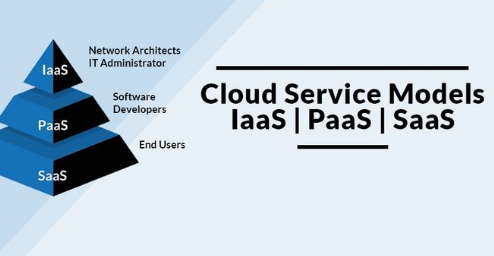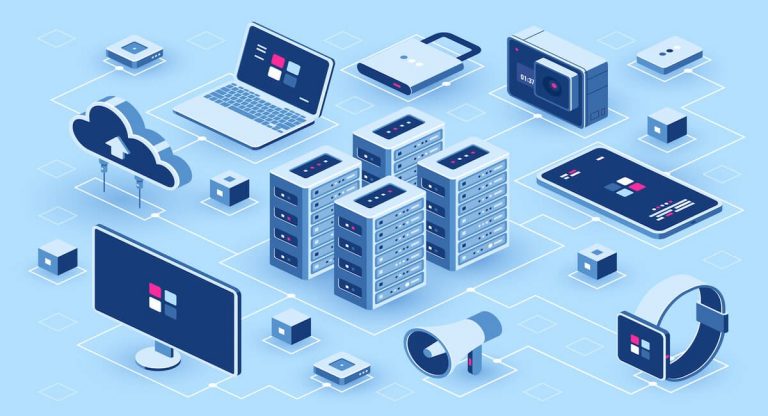
IaaS revolutionizes cloud computing, helping businesses to innovate faster, grow easily, and navigate digital change.
In an era where digital transformation is no longer an option, businesses are increasingly turning to cloud computing to accelerate innovation, improve scalability, and reduce costs.
Infrastructure as a Service (IaaS) has emerged as a popular cloud paradigm in recent years, providing unrivaled flexibility and scalability. The IaaS market is seeing explosive growth, with revenue expected to reach US$183.50 billion this year and US$461.90 billion by 2029, led by trends such as artificial intelligence (AI) integration, edge computing, and the rise of multi-cloud strategies.
As businesses look to reduce costs, increase agility, and drive innovation, IaaS offers an appealing answer. This trend is transforming not only IT departments, but entire business models, allowing organizations to react quickly to market shifts and customer needs.
Infrastructure as a Service and the Cloud Computing Landscape
At its core, IaaS is a cloud computing platform that delivers virtualized computing resources via the internet. According to Nick Drouet, CTO at Kyndryl UK&I, “Infrastructure as a Service (IaaS) is a cloud computing model providing virtualized resources like virtual machines, storage, and networking on a pay-as-you-go basis.”
To comprehend the notion of IaaS, consider how it differs from other cloud computing models, such as Platform as a Service (PaaS) and Software as a Service (SaaS). Mallory Beaudreau, RVP – Account Management EMEA at Apptio, offers an excellent illustration.
“If we think of cloud computing like renting a house, IaaS is like renting your home unfurnished, giving you full flexibility to use it as you wish,” her explanation states. “PaaS, on the other hand, is like renting a partially furnished house; you still have access to the space (or infrastructure) and all of the essential components, but you have some freedom to use it as you see fit. Finally, SaaS differs in that it is similar to renting a vacation apartment; there are numerous alternatives, but it is already equipped and set up, so there is less to configure, and you must operate in a very precise manner that is consistent with that model.”
IaaS provides the most control and flexibility, enabling organizations to install, operate, and administer their own applications on the given infrastructure. PaaS simplifies infrastructure administration by focusing on application development, whereas SaaS provides fully managed software applications with less control over the underlying infrastructure.
“In SaaS models, subscribers do not manage the underlying infrastructure,” says Liron Golan, Head of SaaS Portfolio Marketing for Nokia’s Cloud Network Services division. “PaaS offers a platform for creating and deploying applications, which includes tools, libraries, and runtime environments. PaaS customers control the applications but not the underlying infrastructure.”

The Business Case for IaaS
Businesses of all sizes and industries benefit greatly from the use of IaaS. One of the most major advantages, according to Mallory, is the speed and agility it provides. “The most obvious benefit IaaS provides to enterprises is speed. If a large organization requires hardware to develop a new product or grow into a new region, for example, they will have two options: buy the hardware or use IaaS.”
By eliminating the requirement for actual hardware acquisition and setup, IaaS significantly decreases the time to market for new goods and services. This agility is critical in today’s fast-paced business world, when the capacity to respond swiftly to market developments may make or break a company’s success.
Another compelling reason for organizations to adopt IaaS is cost savings, according to Liron, as the model allows them to optimize their IT spending by paying only for the services they utilize. “IaaS eliminates the need for upfront CapEx on hardware and reduces operational costs like maintenance and energy consumption.”
Scalability provided by IaaS is especially useful for enterprises with variable workloads. Nick points out: “For small businesses, IaaS removes the need for sizeable upfront capital investments in hardware and infrastructure, allowing them to scale their resources according to demand and only pay for what they use.”
This scalability benefits more than just small enterprises. Large companies can use IaaS to help launch large-scale, mission-critical applications. Industries such as healthcare, banking, and retail can benefit from IaaS providers’ strong security measures and compliance support, which ensure that sensitive data is protected in accordance with industry standards.
“Cloud providers offer robust security measures and regular updates,” Liron says, thereby “reducing the risk of security breaches and data loss.”
Navigating the hurdles of Iaas migration
While the advantages of IaaS are obvious, transitioning to this paradigm is not without obstacles. Organizations must carefully assess and handle these challenges to achieve a smooth transition.
One of the most significant problems is the mentality shift required when transitioning from traditional IT systems to the cloud. Mallory provides an explanation: “Cloud is flexible and dynamic, but traditional IT was not as adaptive, and this will involve a mentality shift about how to respond to capacity demands.”
This shift in mentality affects how firms approach capacity planning. The traditional way of building for peak capacity is being replaced by a more dynamic approach that responds to shifting demand. Mallory uses a video streaming service as an example to demonstrate this: “The cloud allows you to build an application that adapts to capacity needs, so you can operate at low levels and turn up capacity as demand increases during peak times.”
Security concerns are another big challenge in IaaS migration, according to Liron. “Migrating sensitive data to the cloud requires careful consideration of security measures and compliance regulations.”
Integration issues might also develop when mixing cloud resources with on-premises systems. Nick emphasizes the value of knowledge in dealing with these challenges: “A deep understanding of infrastructure has ensured seamless interoperability and operational efficiency.”
Another factor to consider is the risk of vendor lock-in.”Choosing a specific IaaS provider can lead to vendor lock-in, making it difficult to switch providers later,” Liron tells me. To resist this threat, companies should carefully consider their long-term requirements and the flexibility provided by various IaaS providers before making a commitment.
Finally, the talent gap poses a difficulty for many organizations, and adopting IaaS models is no exception. “Organisations may need to learn new skills and experience to manage and operate an IaaS environment successfully,” Liron explains.”

The future of IaaS: emerging trends and developments.
As technology advances, so does the landscape of IaaS. Several major themes are influencing the future of this cloud computing platform.
According to Mallory, AI and Machine Learning (ML) are at the vanguard of these developments. “In the coming months and years, generative AI (Gen AI) will continue to be at the center of cloud talks. The growth of AI is dependent on cloud access, and as the AI market evolves, we may see more PaaS and SaaS solutions develop around it.”
The combination of AI and ML with IaaS is creating new opportunities for enterprises. Nick brings up: “IaaS platforms are integrating AI and ML services, facilitating data analysis and automation.” This integration enables enterprises to access advanced analytics and automation capabilities without making major upfront expenditures in AI infrastructure.
Edge computing is another growing trend in the IaaS market. Liron elaborates: “IaaS is expanding to the edge, enabling data processing and application execution closer to users, reducing latency and improving performance.” This is especially important for applications that demand real-time computing, including Internet of Things (IoT) sensors and self-driving automobiles.
Serverless computing is also becoming a prominent trend in IaaS. Liron points out, “IaaS providers are offering serverless computing services, allowing businesses to run code without managing servers, further reducing operational overhead.” This method enables developers to concentrate only on writing code, without regard for the underlying infrastructure.
The emergence of multi-cloud and hybrid cloud methods is another significant trend. According to Nick: “Multi-cloud and hybrid strategies are popular to avoid vendor lock-in and optimise costs, prompting providers to enhance interoperability and management tools.” This method enables enterprises to exploit the characteristics of many cloud providers while being flexible in their cloud strategy.
Sustainability is also becoming a more essential factor in IaaS. As organizations grow more aware of their environmental impact, IaaS providers are working on increasing energy efficiency and lowering the carbon footprint of their data centers. “Sustainability initiatives and advanced networking technologies like 5G are also improving performance and reliability,” according to Nick.

Is IaaS suitable for your business?
Infrastructure as a Service has transformed the way enterprises manage their IT infrastructure. It provides unprecedented flexibility, scalability, and cost-efficiency, allowing businesses of all sizes to access enterprise-grade infrastructure without making major upfront commitments.
However, the decision to use IaaS should be carefully reviewed. While the benefits are significant, migration issues, security concerns, and the risk of vendor lock-in must be addressed. When analyzing IaaS adoption, organisations must take into account their specific requirements, existing infrastructure, and long-term IT strategies.
Mallory elaborates: “IaaS ensures companies can leverage the technology, including storage space and networks, without needing to purchase the tech, which drastically speeds up the process, cutting out the need for physical delivery.”
With the continuing evolution of IaaS, driven by trends such as AI integration, edge computing, and serverless architecture, the future of this cloud computing model appears bright. As businesses continue to digitize and seek more flexible, scalable IT solutions, IaaS will become increasingly important in shaping the future of enterprise IT infrastructure.
Whether you’re a tiny startup trying to reduce upfront expenses or a major company looking to improve agility and creativity, IaaS is a compelling choice to explore for your cloud strategy. Nick puts it this way: “IaaS offers flexible scalability, substantial control over operating systems and applications and cost efficiency, making it ideal for businesses seeking extensive customisation and control over their infrastructure.”







